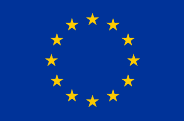
Safe non-food consumer Products in the EU and China
Protective gloves are gloves which offer the wearer hand and arm protection against one or more risks that they may encounter. As such products are designed to provide protection to the user, they are regulated under the Regulation (EU) 2016/425 on personal protective equipment.
PPE are classified in three categories depending on the risk against which they protect. Protective gloves can be found in any of the three categories:
Gloves that have a medical purpose in the patient environment are also medical devices and fall also under the scope of the Medical Devices Regulation (EU) 2017/745. Their classification depends of the associated risk: examination gloves are class I devices, while surgical gloves are in class IIa as surgically invasive devices intended for transient use.
This is a list of examples of common risks. However, the manufacturer has to carry out an assessment of the protective gloves that covers all relevant risks that may be associated with the product and actions taken to mitigate these risks where possible. The categorization of the gloves in one of the three PPE categories will depend on the result of this risk assessment. The appendix of the PPE Regulation Guidelines includes a guide for the categorization of PPE, including some examples for gloves. A general definition of risk and its relationship to hazards can be found in the factsheet on Risk management.
The most obvious risk with protective gloves is that it does not offer the level of protection claimed or expected by the user, who may be injured because of reliance on the stated or expected level of protection. Some of these are listed below:
In addition, some products may present a risk to the wearer just by being worn, and these are independent of the protective mechanism. The most common risks are:
Specific examples of measures taken against dangerous protective gloves offered for sale in the European Union are available on the Safety Gate website. Type ‘gloves’ into the free text search box (but without the quotation marks). A better understanding of mistakes made in the safety assessment of gloves, or their manufacture can help avoid their repetition.
These products are regulated mainly by the Personal Protective Equipment Regulation (EU) 2016/425. The legislation lays down requirements for the design and manufacture of PPE that are necessary to allow these products to be sold and used in the EU market.
Gloves that have a medical purpose in the patient environment have to comply also with the applicable requirements of the Medical Devices Regulation (EU) 2017/745.
Other guidance is also available:
“Harmonised standards” exist in the EU for protective gloves. A product claiming a particular level of protection and complying with these standards is presumed to be in conformity with the essential health and safety requirements set out in the PPE Regulation if the standards are referenced in the Official Journal of the European Union (OJEU). Further information on, and the list of harmonised standards for PPE is available from here.
Note: The full text of European standards can only be purchased from a national standardisation body. The following site of CEN (the European standardisation organisation) provides links to the national standardisations bodies’ websites. In addition, the China Standards Information Services Network can be used to access European standards.
The following standards can be applied to protective gloves:
EN ISO 374-1:2016 and EN ISO 374-5:2016
This standard has been published in multiple parts and applies to protective gloves against dangerous chemicals and micro-organisms. Parts 1 and 5 relate to instructions for use, marking, packaging and performance requirements.
EN 388:2016+A1:2018
This standard outlines the performance requirements for gloves which are designed to protect against a range of mechanical risks.
EN 407:2004
This standard provides performance requirements and test methods for gloves which are designed to protect against thermal risks.
EN 420:2003+A1 2009
This is a general standard for protective gloves and provides a basis for assessment of protective gloves which do not have a specific standard related to the risks they are intended to protect against.
EN 511:2006
This is another general standard which has been developed to assess the effectiveness of gloves which are designed to protect the user against cold.
There are also other specific standards for protective gloves for use with chainsaws or with welding equipment, in environments with ionising radiation or electrostatic energy, those used by firefighters, those used in environments where sharp knives or stab risks are present, those designed to protect against vibration, and also those used by riders of motorcycles.
While manufacturer’s need to familiarise themselves with all the laws which apply to their specific products, the following summarises some further key applicable laws:
The following are obligatory:
In addition, the following information must be provided with the PPE:
The information in points (i), (j), (k) and (l) need not accompany the product if it is supplied with a copy of the EU declaration of conformity.
To ensure safety of protective gloves, there is also a range of general requirements to be fulfilled. These are explained in the following factsheets and need to be read in conjunction with this factsheet:
You may also visit the SPEAC ACADEMY to learn more about the EU Safety requirements.
The provided information was updated in 2022. Please note that some of the provided information could change during possible subsequent revisions of legislation, standards, and guidance documents. For any updates of official information on the EU product safety rules, please follow the Link to the webpage of the European Commission.
This document was produced with the financial support of the European Union. Its contents are the sole responsibility of SPEAC project and do not necessarily reflect the views of the European Union.

This website was created and maintained with the financial support of the European Union. Its contents are the sole responsibility of SPEAC project and do not necessarily reflect the views of the European Union.